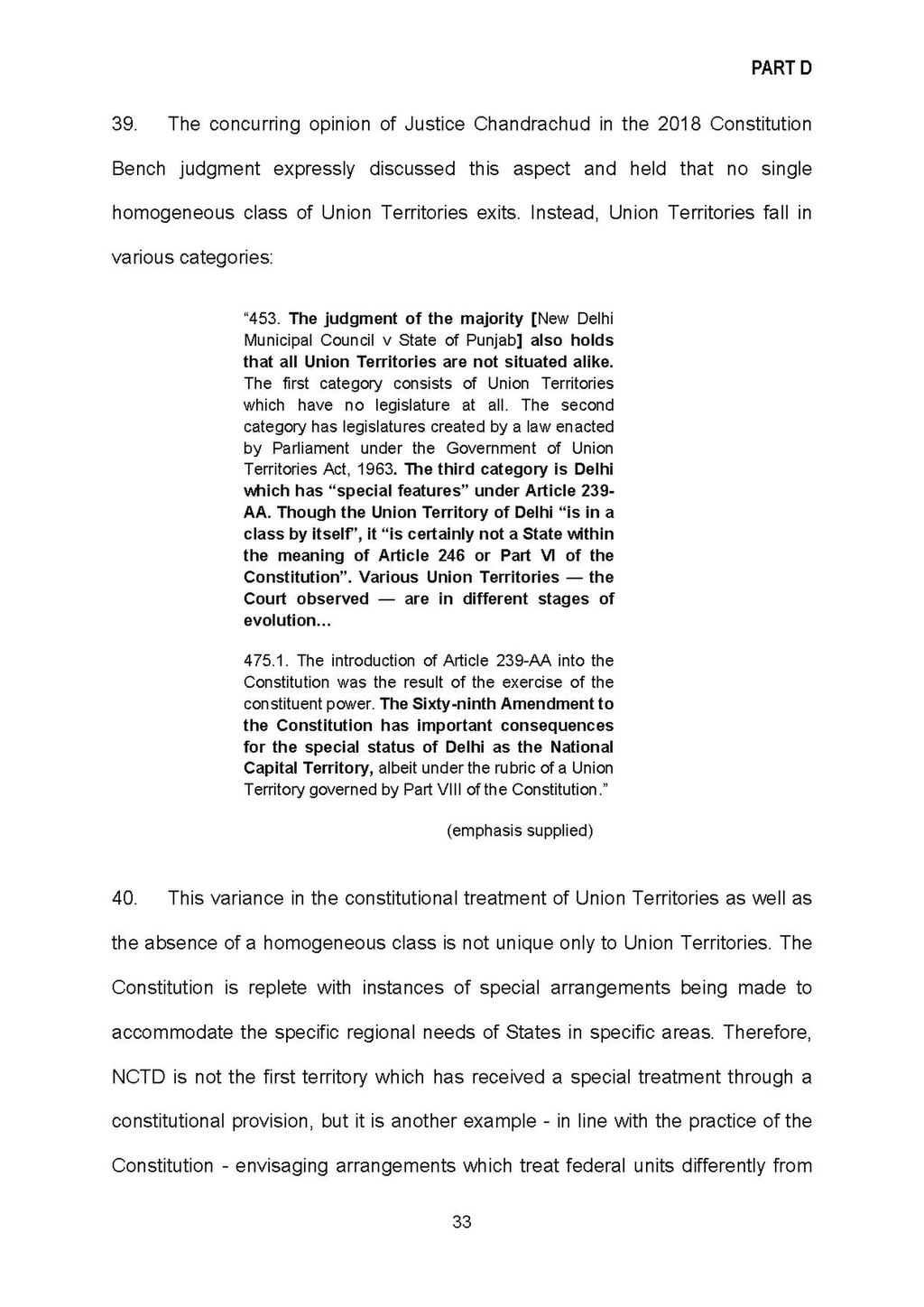39.The concurring opinion of Justice Chandrachud in the 2018 Constitution Bench judgment expressly discussed this aspect and held that no single homogeneous class of Union Territories exits. Instead, Union Territories fall in various categories:
“453. The judgment of the majority [New Delhi Municipal Council v State of Punjab] also holds that all Union Territories are not situated alike. The first category consists of Union Territories which have no legislature at all. The second category has legislatures created by a law enacted by Parliament under the Government of Union Territories Act, 1963. The third category is Delhi which has “special features” under Article 239- AA. Though the Union Territory of Delhi “is in a class by itself”, it “is certainly not a State within the meaning of Article 246 or Part VI of the Constitution”. Various Union Territories — the Court observed — are in different stages of evolution…
475.1. The introduction of Article 239-AA into the Constitution was the result of the exercise of the constituent power. The Sixty-ninth Amendment to the Constitution has important consequences for the special status of Delhi as the National Capital Territory, albeit under the rubric of a Union Territory governed by Part VIII of the Constitution.”
(emphasis supplied)
40. This variance in the constitutional treatment of Union Territories as well as the absence of a homogeneous class is not unique only to Union Territories. The Constitution is replete with instances of special arrangements being made to accommodate the specific regional needs of States in specific areas. Therefore, NCTD is not the first territory which has received a special treatment through a constitutional provision, but it is another example - in line with the practice of the Constitution - envisaging arrangements which treat federal units differently from
33
